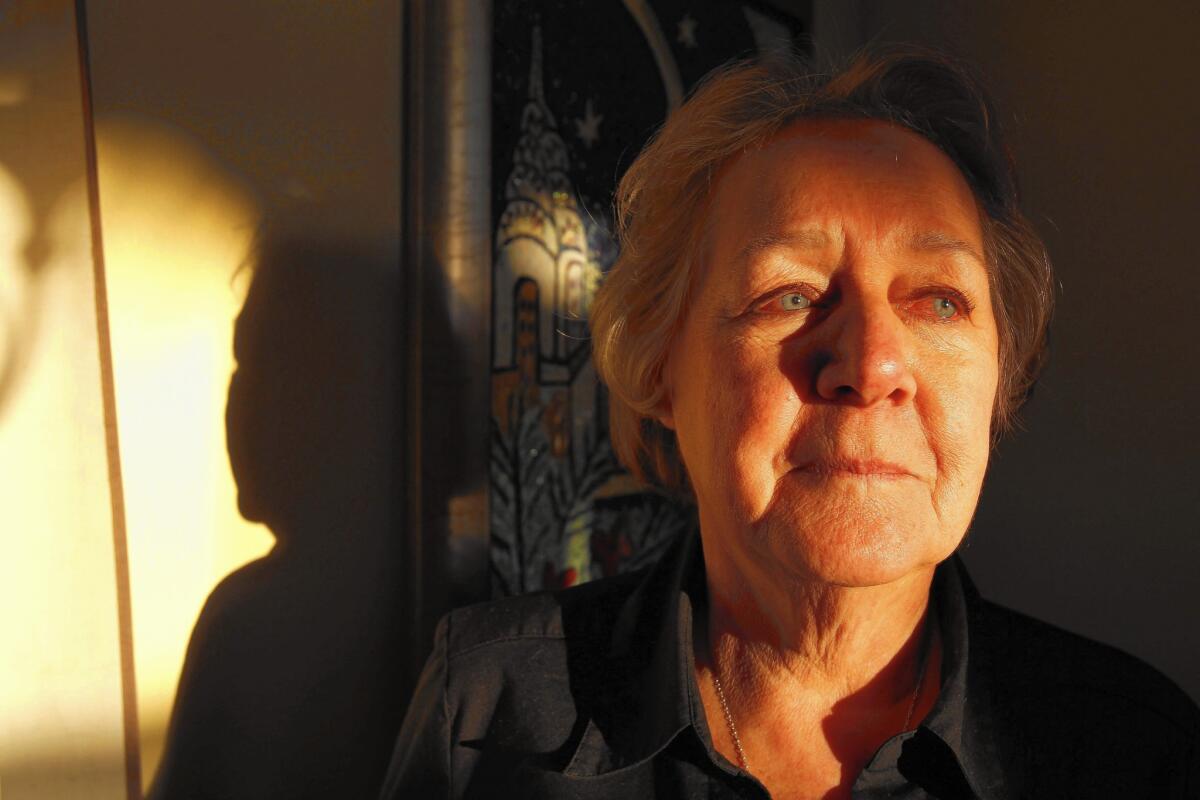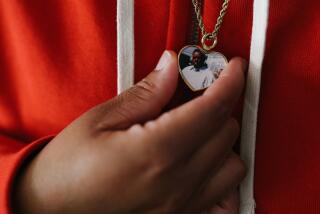San Diego County jail protocols aim to cut suicide rate

Rochelle Nishimoto, whose son Jason Nishimoto committed suicide in jail after he was arrested in September, reflects in her home in Vista.
Jason Nishimoto was not supposed to have a sheet in his jail cell, or anything to hang it from. But he did.
The 44-year-old, who’d been diagnosed with schizoaffective disorder, was supposed to be in a suicide watch cell with special safeguards under new policies at the San Diego County Sheriff’s Department for people whose cases indicate suicide risks.
When the jail took Nishimoto in after a family disturbance in September, his mother, Rochelle Nishimoto of Vista, received reassurances in a phone call from a nurse.
“‘OK, don’t worry mom, we’ll take good care of your son,’” Rochelle Nishimoto said she was told, shortly before her son took his own life.
After six suicides last year, the county instituted new policies and protocols this year in an effort to reduce such deaths. The effort is partly to better care for inmates and partly to save taxpayers from multimillion-dollar legal settlements that have resulted from jail deaths.
The protocols seemed to pay off for the first half of 2015, but a rash of suicides in the fall have brought the total to five for 2015 so far.
That number is significant compared with the other five largest jail systems in California. San Bernardino has had three jail suicides. Los Angeles and Santa Clara each has had one. And Orange and Sacramento counties have had none.
Los Angeles County, with three times the jail population of San Diego, has had one jail suicide this year after 10 in 2013.
The drop in L.A. jail suicides is the result of a federal investigation — and a subsequent agreement with the U.S. Department of Justice — regarding the treatment of mentally ill inmates, including suicide prevention. In September, L.A. County agreed to pay $1.6 million to the family of 21-year-old Austin Losorelli, a suicidal inmate who was transferred to a single-person cell where he hanged himself.
“This is costly for counties,” said Peter Eliasberg, legal director at the ACLU of Southern California. “Where there’s these warning signs and basic protective steps aren’t taken, counties can get slammed.”
San Diego County started 2015 with a jail suicide on Jan. 6, before its new protocols were fully implemented. Then for seven months, there were no suicides.
On Aug. 18, Sergio Valenzuela, 20, was found hanging in his cell in the Central Jail. According to the medical examiner’s report, Valenzuela struggled with drug addiction and had previously been hospitalized for a suicide attempt.
On Sept. 29, Martin Dozal, 38, killed himself at the George Bailey Detention Facility in Otay Mesa. Nicholas Medel committed suicide there Nov. 8.
Nishimoto’s trip to jail started with a suicide attempt. On Sept. 24, he swallowed a bottle of the prescription medication Klonopin. His mother, Rochelle Nishimoto, found the empty medication bottle and called Jason’s brother, Adrian, who lived nearby.
When the brother arrived, Nishimoto was trying to leave in his car. He picked up a shovel and threatened to hit his brother, who called 911.
Family members said they told the dispatcher — and the deputies who arrested Nishimoto over the physical threats — about the suicide attempt and ongoing risk. His mother also told the jail’s psychiatric nurse, who called the next day with questions about medication.
Nishimoto had never been to jail nor had been arrested, Rochelle Nishimoto said. He also had attempted suicide in August with Klonopin, she said. He was treated at Tri-City Medical Center and put on suicide watch. After he was released, he seemed to be doing OK, she said.
“We always got through hard spots before,” Rochelle Nishimoto said.
The medical examiner’s report notes that at the time of his arrest in September, Nishimoto “made suicidal statements and stated he had consumed a large amount of pills.” Deputies took him to the emergency room at Tri-City, where he was cleared before being booked into jail.
At the jail, the report says, Nishimoto was placed in a single-occupancy cell and allowed out only one hour a day, “with no other inmates allowed out of their cell at the same time.”
The medical examiner’s report says Nishimoto was seen by a psychiatric nurse Sept. 25 and had an appointment to see a psychiatrist Sept. 27, the day he was found hanging in his cell.
Attorney Chris Morris said he plans to file a lawsuit on Rochelle Nishimoto’s behalf.
“If [Jason Nishimoto’s] treatment followed the new suicide matrix, then clearly the suicide matrix is not accomplishing its stated goal,” Morris told the San Diego Union-Tribune.
The San Diego County Sheriff’s Department introduced its suicide prevention protocol in February. The changes were spearheaded by Dr. Alfred Joshua, who was hired in November 2013 as the department’s chief medical officer.
In addition to better communication among jail staff and those who come into contact with inmates — other law enforcement agencies, court staff and medical providers — the protocol includes placing inmates flagged as a suicide risk in “enhanced observation” modules, where cells have been stripped of any tie-off points to prevent hanging.
Inmates are given tear-proof suicide smocks and blankets, and new protective fencing prevents them from jumping off the second tier of two-tier modules. The sheriff has hired additional mental health clinicians, Joshua said, and is in the process of hiring more.
In developing the program, Joshua said, sheriff’s medical staff reviewed past inmate suicides and toured jails around the country that had successfully reduced their suicide rate, such as Dallas, which had no inmate suicides for two years.
Identifying at-risk inmates is the most important part of any suicide prevention program, said Lindsay Hayes, project director for the National Center on Institutions & Alternatives and an expert on in-custody suicides.
“Jails do a very good job of keeping people alive — once they’re identified as suicidal,” Hayes said. “But that’s really not what suicide prevention is. Suicide prevention is the identification process.”
Kelly Davis is a contributor to San Diego Union-Tribune.
More to Read
Start your day right
Sign up for Essential California for news, features and recommendations from the L.A. Times and beyond in your inbox six days a week.
You may occasionally receive promotional content from the Los Angeles Times.






